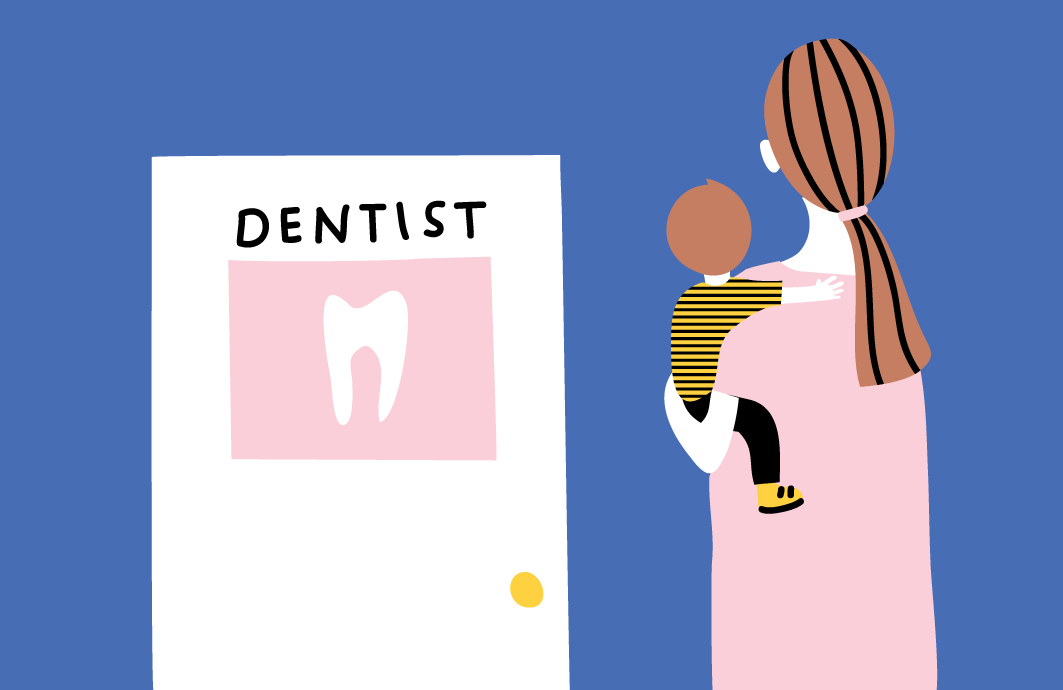A child may only have a couple of teeth by their first birthday — or no teeth at all — but that doesn’t mean they don’t need to see a dentist.
The American Academy of Pediatric Dentistry recommends children see a dentist by their first birthday or within six months after their first tooth erupts. In addition to establishing a dental home, those early visits give dentists an opportunity to arm parents with information to prevent their kids from experiencing tooth decay, which can begin as early as age 1, according to the academy.
“It really heightens the parent’s awareness of what they need to be doing,” said Dr. Todd Hillyard, a pediatric dentist at Adventure Dental in Salmon Creek. “Our responsibility as parents, starting when the teeth first come in, is to do everything we can to prevent decay.”
For the first visit, the dentist may not even perform an exam. At Adventure Dental, they offer “happy visits” where kids and parents check out the office and the equipment dentists and hygienists use.
The main thing dentists want to do during those first visits is establish a baseline, said Dr. Linh Vo-Cheng, a pediatric dentist at the Kaiser Permanente Cascade Park Dental Office. They make note of the number of teeth, the sequence in which teeth are coming and gum health, as well as behaviors such as thumb sucking and drinking from bottles, Vo-Cheng said.
Dentists may also offer tips and guidelines for brushing, flossing and use of toothpaste. The main goal, Vo-Cheng said, is to make sure parents know what they can do to ensure their child’s oral health gets off to a good start. Babies establish a medical home right away, visiting their pediatrician several times in the first few years. Dentists want to do the same, she said.
“For the dental part of it, because they don’t have teeth right away, we don’t think about it,” Vo-Cheng said. “The sooner we see them, the sooner we can have this relationship.”
Getting that education early is important, Hillyard said. They may only be baby teeth, but tooth decay is still a disease. The infection can lead to pain, missed school and even damage to permanent teeth, he said. If baby teeth need to be removed due to infection, that leaves the child without surfaces for chewing and placeholders for adult teeth, Hillyard said.
And don’t be discouraged from visiting the dentist if you don’t think your child would sit still for an exam, Vo-Cheng said.
“We don’t expect them to come in all happy and excited to see us and give us a hug,” she said. “It shouldn’t deter an appointment.”
Hillyard and Vo-Cheng offered some additional tips for caring for babies’ and toddlers’ teeth.
• Wipe or brush gums and teeth.
The pediatric dentistry academy recommends cleaning babies’ gums with a soft cloth or infant toothbrush at bath time. Starting that habit early will make it easier to continue once teeth come in, Vo-Cheng said.
Once teeth come in, parents should continue to wipe down the surface of teeth, gums, tongue and anything else that food can attach too. Either a soft cloth or one of the various toothbrushes on the market will get the job done, Vo-Cheng said.
• Use toothpaste (if you want) and floss.
The sooner kids begin using toothpaste with fluoride, the sooner they get that extra protection against cavities, Vo-Cheng said. For younger kids who can’t spit, use just enough paste to coat their teeth — about the size of a grain of rice, she said.
But, if you’re not comfortable with fluoride toothpaste, just be extra diligent about brushing teeth to remove all food particles, Vo-Cheng said.
And flossing needs to begin as soon as the child has touching teeth, she said.
• Limit grazing.
Children who spend the day snacking, rather than eating set meals and snacks, are subjecting their teeth to a lot of acid, Vo-Cheng said. It takes 20 to 30 minutes for the acid in the mouth to neutralize after eating. If kids are eating every half an hour, they aren’t giving their teeth a break, she said.
“It just bathes their teeth in acid all day long,” Vo-Cheng said. “And it increases their risk for cavities, even though they’re eating healthy snacks.”
• Stay away from carbohydrates.
The biggest cause of cavities, aside from genetic predisposition, is diet, Hillyard said. When kids eat carbohydrate-heavy foods — such as candies, crackers and cereal bars — those sticky carbs cling to the teeth and, within 20 minutes, begin to break down the tooth. It takes three hours for the saliva to undo the damage done in 20 minutes, he said.
“We’ve got to get rid of all the stuff that sticks to your teeth,” Hillyard said. “If you eat it, and look in their mouths and it’s stuck to their teeth and inside their mouth, it’s bad.”
If they do eat carb-heavy foods, be sure they wash the meal down with water, Hillyard said.
“Have your kids drink tons and tons and tons of water,” he said. “That will help prevent decay.”
“Our goal is to never have decay,” Hillyard added. “It’s preventable.”




